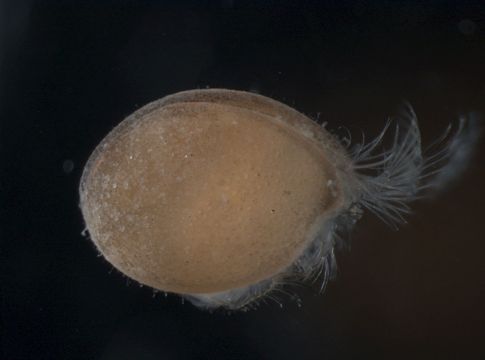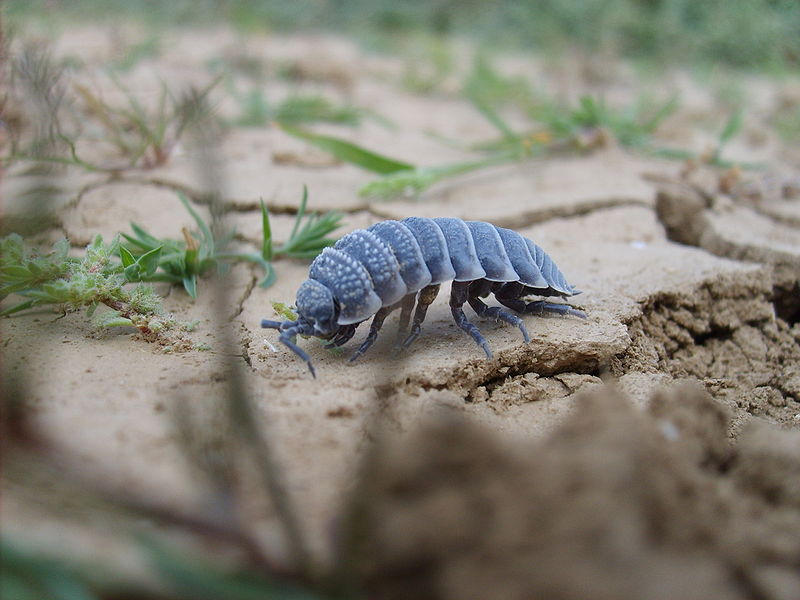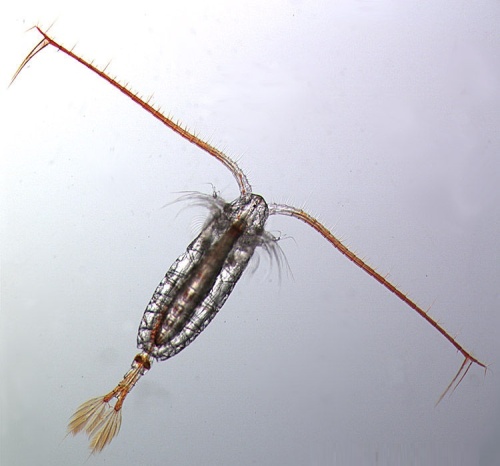by Piter Kehoma Boll
We reached again one of those problematic weeks in which I have to talk about something of which I know very little. This time the problem is called Euphilomedes carcharodonta, a small crustacean of the class Ostracoda, known as ostracods or seed shrimps. I decided to adapt the name of this species as sharp-toothed Venus seed-shrimp.
Although seed shrimps form a very diverse and species-rich group of organisms, I cannot find much details on particular species, so it is a challenge to present one here, but I decided to talk a little about the sharp-toothed Venus seed-shrimp, so let’s go.

Measuring only a few milimeters, the sharp-toothed Venus seed-shrimp is found in the sea along the west coast of the United States. It has a typical ostracod appearance, looking like a small shrimp within a bivalvian shell.
Males and females of the sharp-toothed Venus seed-shrimp show sexual dimorphism, part of which is not only related directly to sex, but actually to the different niches that each sex occupies in the environment. Females pass most of their time buried in the sediments where light and predators are limited and, as a result, they have poorly developed eyes. The males, on the other hand, spend a lot of their time swimming in the water and are very vulnerable to predators, such as fish. Therefore, males have very well developed eyes that allow them to see fish from the distance. Experiments have shown that the eyes do not help them to identify the tiny females, but are essential to survive predation.

And that’s what I got about this fellow. As I asked before while talking about other groups of organisms, such as foraminiferans, if you have good resources on more detailed knowledge about species in this group, please share them in the comments. We need to give more visibility to those tiny and neglected souls that share this planet with us.
– – –
– – –
References:
Sajuthi, A., Carrillo-Zazuetta, B., Hu, B., Wang, A., Brodnansky, L., Mayberry, J., & Rivera, A. S. (2015). Sexually dimorphic gene expression in the lateral eyes of Euphilomedes carcharodonta (Ostracoda, Pancrustacea) EvoDevo, 6 : 10.1186/s13227-015-0026-2
Speiser, D. I., Lampe, R. I., Lovdahl, V. R., Carrillo-Zazueta, B., Rivera, A. S., & Oakley, T. H. (2013). Evasion of Predators Contributes to the Maintenance of Male Eyes in Sexually Dimorphic Euphilomedes Ostracods (Crustacea) ntegrative and Comparative Biology, 53 (1), 78-88
– – –

*
This work is licensed under a Creative Commons Attribution-NonCommerical-NoDerivs 2.0 Generic License.





